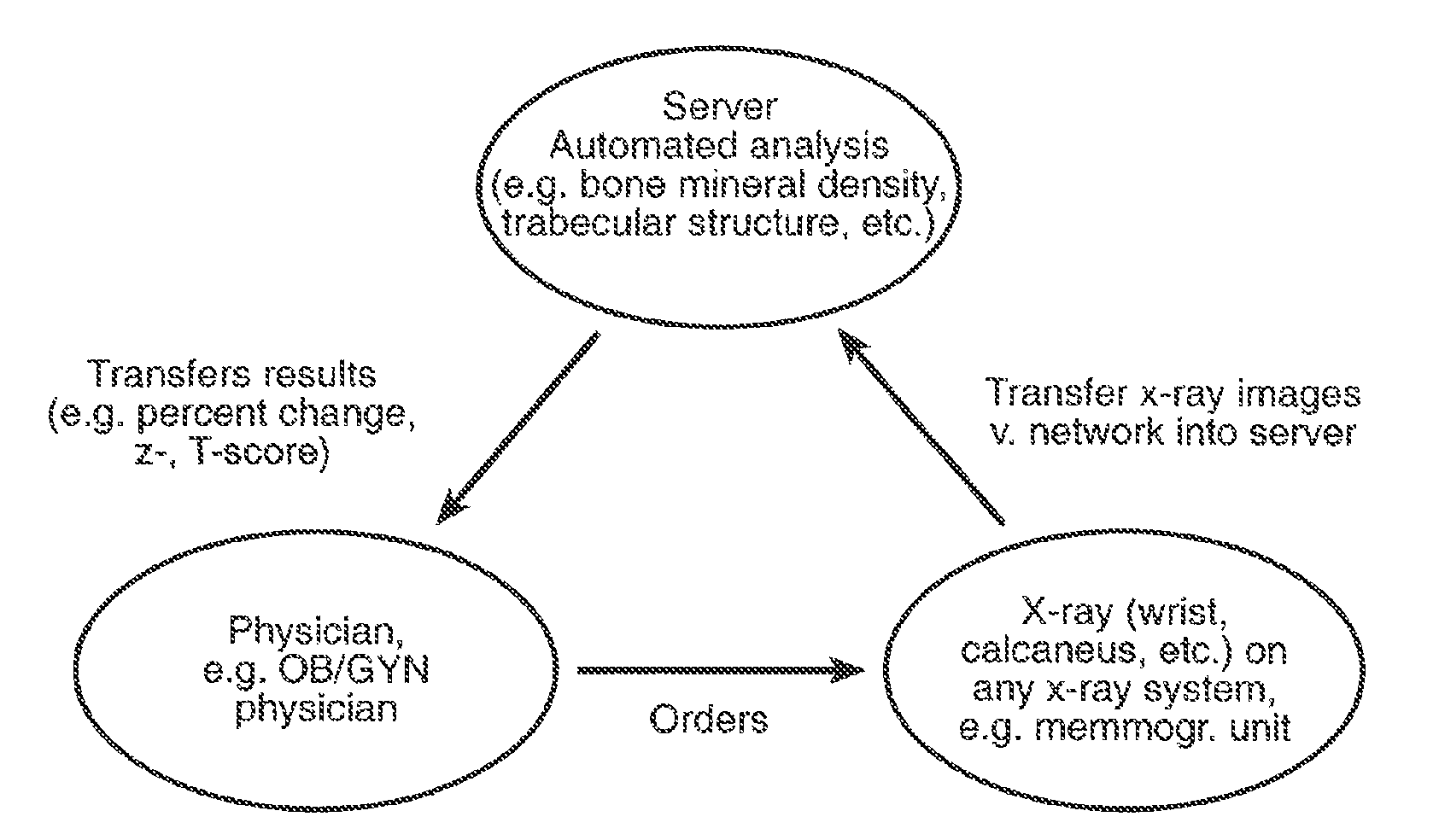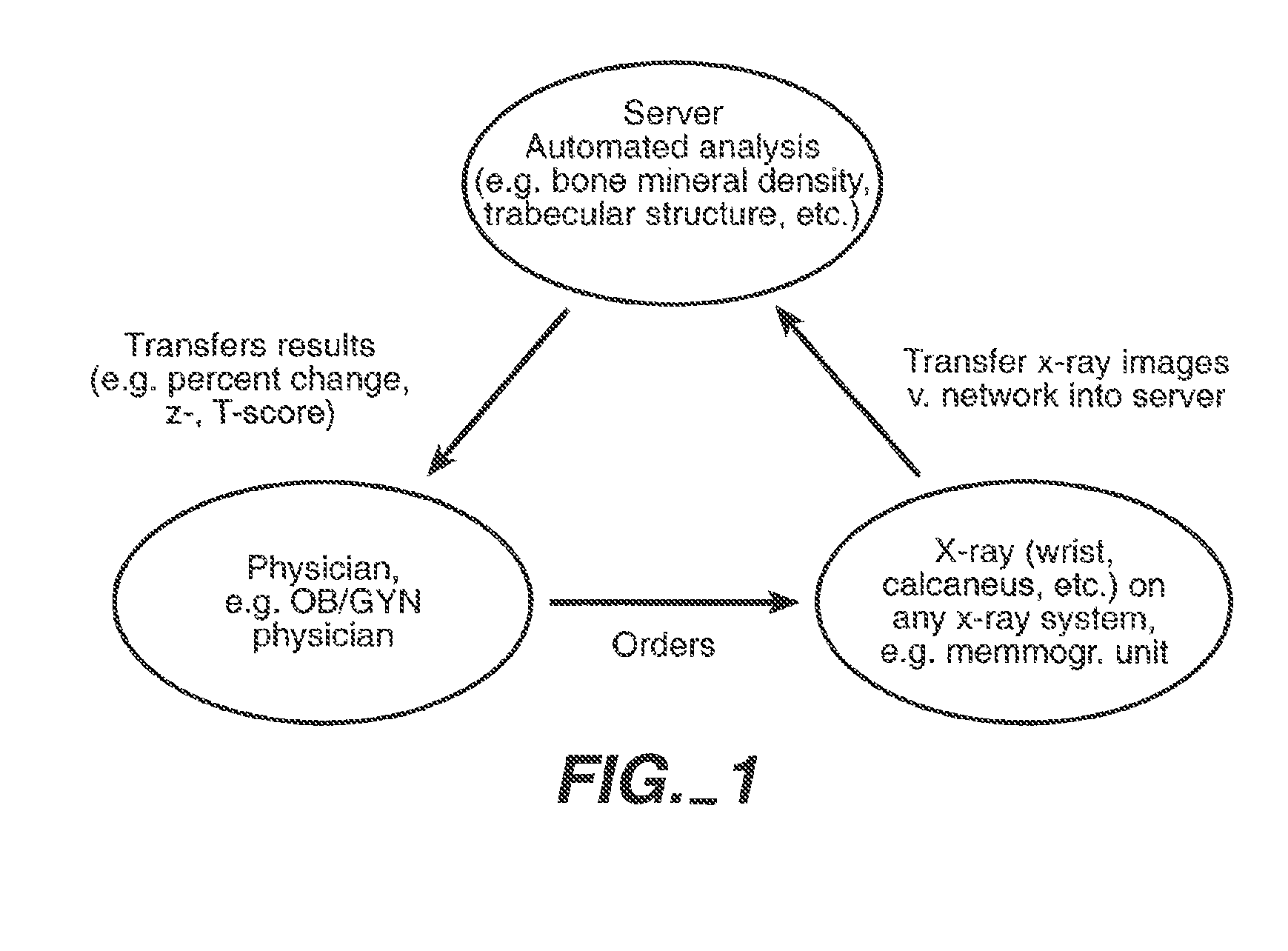Methods and devices for quantitative analysis of x-ray images
a quantitative analysis and x-ray technology, applied in the field of radiographic imaging and analysis, can solve the problems of not always accurate current-available calibration phantoms, and cannot allow for the accurate determination of quantitative information contained in x-rays, and achieve the effect of improving the accuracy of quantitative information
- Summary
- Abstract
- Description
- Claims
- Application Information
AI Technical Summary
Benefits of technology
Problems solved by technology
Method used
Image
Examples
example 1
Calibration Phantom Integrated into Film Cover
The workflow presented herein constitutes one example for the use of a calibration phantom with the image acquisition. One skilled in the art will readily recognize other ways to include a calibration phantom in the acquisition process in order to normalize or standardize any form of measurement made from the x-ray image.
In this example, the calibration phantom is integrated into the cover of a dental x-ray film that protects it from exposure to light. The film is placed into the film holder that is used to hold the film in the patient's mouth. The film holder with the film is positioned inside the patient's mouth in such a way that the calibration phantom is not obstructed from the x-ray beam by any structures such as teeth or the lips etc.
After acquisition of the image, the film is taken to the darkroom and the cover with the calibration phantom is removed. The film is then processed in the same way as a conventional dental x-ray film....
example 2
Transmission of X-Ray Image Including Image of Calibration Phantom over a Network
This example describes one possible typical application of the invention, in which a digitized x-ray image that includes the image of a calibration phantom is transmitted over a network. Similar applications of the invention can easily be recognized.
The x-ray image is acquired in such a way that the calibration phantom is projected onto the film. The film with the x-ray image and the image of the calibration phantom is developed. Subsequently, the film is digitized, for example using a flat-bed or slide film scanner, resulting in a digital image. The digital image, which includes the x-ray image and the image of the calibration phantom, is then transmitted over a network to a remote computer. The remote computer performs one or more measurements using information from the x-ray image and / or the image of the calibration phantom.
example 3
Transmission of X-Ray Image Including Image Acquisition Parameters
The transmission of image data over a network can also include data describing the image acquisition parameters. After acquisition and digitization of the x-ray image, the acquisition parameters are entered into the local computer system. These parameters can include, but are not limited to, voltage settings, tube current, or film-focus distance. The image and acquisition parameter data are then transmitted over the network to a remote computer.
At the remote computer, the image is analyzed. The acquisition parameters can be used in this evaluation to improve the accuracy of the measurements. The results can be sent back to the original location via a digital network or by fax transmission. The results can also be transmitted to third parties.
PUM
 Login to View More
Login to View More Abstract
Description
Claims
Application Information
 Login to View More
Login to View More - R&D
- Intellectual Property
- Life Sciences
- Materials
- Tech Scout
- Unparalleled Data Quality
- Higher Quality Content
- 60% Fewer Hallucinations
Browse by: Latest US Patents, China's latest patents, Technical Efficacy Thesaurus, Application Domain, Technology Topic, Popular Technical Reports.
© 2025 PatSnap. All rights reserved.Legal|Privacy policy|Modern Slavery Act Transparency Statement|Sitemap|About US| Contact US: help@patsnap.com



